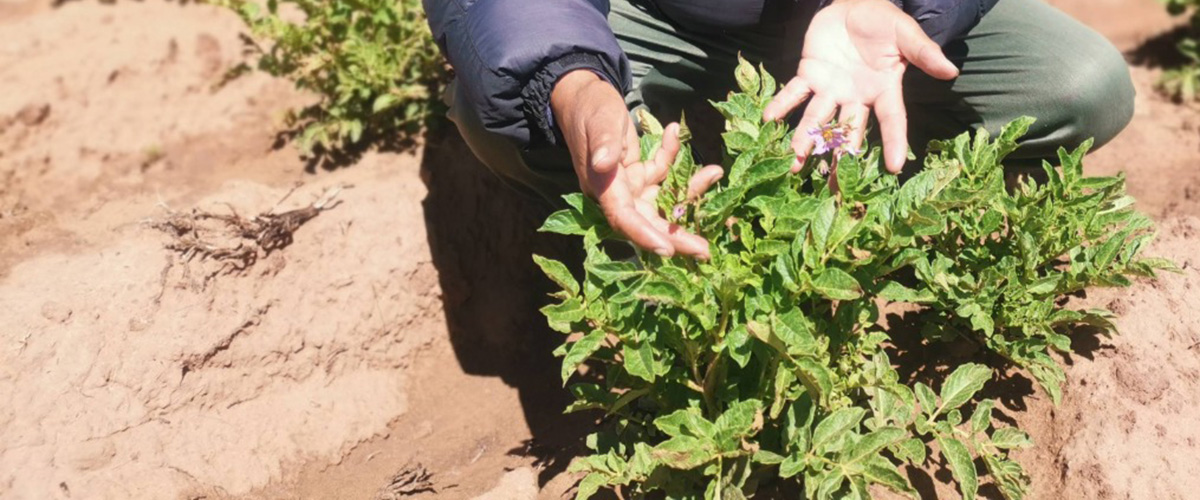
AEI in Agro-Food Systems in Bolivia’s Altiplano
Lead Organization:
Foundation for the Promotion and Investigation of Andean Products PROINPA
Partner Organizations:
FRN representing ANAPQUI and APQUISA; processing companies and independent farmers in Chita, Chacala, Challwa, and Sigualaca; companies associated with CABOLQUI, such as Andean Valley and Irupana; Institute of Biotechnology and Molecular Biology; Institute for Chemical Research; Pure and Natural Sciences faculty from the University of San Andrés (UMSA); National Institute for Agricultural and Forestry Innovation (INIAF); CIMMYT; Andes CoP partners Stats4SD, Soil team, Agroecology team, PROSUCO, and Yapuchiris; IRD; project Strengthening the Resilience of Arid Agroecosystems Vulnerable to Climate Change by JIRCAS with Kyoto, Tokyo, and Obihiro universities, funding from JICA, and the Ministry of Environment and Water (MMAyA) of Bolivia
Community of Practice:
Countries:
Bolivia
Duration:
8/2021—8/2024
Overview:
Quinoa is the main crop in the Bolivian highlands’ semiarid and arid regions because of its nutritional, economic, and sociocultural value. Farmers in associations, in supplier groups of processing companies, and as independents interact with public institutions. Most actors’ main objective is the commercialization of organic quinoa to foreign and domestic markets under social programs. Institutions and organizations contribute to innovations and their diffusion.
Climate change and technology applications put sustainable quinoa production and the system at risk. This is accentuated in the highlands, where scarce rainfall dramatically affects productivity. Temperature increase leads to greater pest populations, which leads to the application of agrochemicals that contaminate the grain and environment. Lack of replacement of organic matter reduces options for recovering soil fertility. Expansion of the agricultural frontier, use of the disc plow, and lack of minimum tillage practices cause high levels of wind erosion, leading to desertification. To adapt, farmers demand early varieties and technologies. Companies demand technologies for sustainable agroecosystem management based on agroecological principles and regenerative agriculture to improve grain quality and reduce pollution.
PROINPA, with McKnight support, has generated multipurpose barriers, biocontrollers, etc. used by farmers and entities; however, local inputs to reduce erosive processes and improve soil fertility are demanded. It is necessary to analyze local preparations to make them more efficient. Using the highlands’ agrobiodiversity to select early varieties of quinoa and native species allows adaptation of the variability and climate change (frost, drought, etc.). The quinoa moth is a high-loss factor. Its population needs to be regulated with practices and options by biophysical and social context. The FRN is key to that process.
Grant Aims:
Contribute to the AEI of agroecosystems in quinoa family farming in the Bolivian highlands’ semiarid and arid areas through research on agroecological technologies and practices in managing agrobiodiversity, soil health, and regulation of pest insects.
1. Increase availability of varieties to expand quinoa genetic and native and naturalized plant diversity to improve agroecosystems and quinoa production in different biophysical and social contexts of Central and Southern highlands.
2. Determine benefits of vertical tillage and manure bioactivation on soil health as an ecological principle in agricultural management of the southern altiplano of Bolivia systems.
3. Evaluate agroecological pest management technologies and practices for contributing to the revitalization of quinoa production agroecosystems.
Outputs and Outcomes:
Outputs
- Early quinoa lines and/or varieties identified and evaluated from the currently cultivated genetic diversity for contributing to resilience to the changing climate
- Intravarietal selection techniques and practices described that allow quality improvement of quinoa seed and contribute to maintaining originality of quinoa variety to farmers
- Description of efficiency and contribution of wild and cultivated legumes to fertility, increase in biota, and soil covering
- Description of efficiency of multipurpose living barriers in reducing wind erosion and soil biota
- Description of benefits and limitations of vertical and horizontal tillage in improving health of sandy soils in southern highlands
- Description of bioactivators’ efficiency to decompose manure in arid soils of the highlands in addition to enriching soil microbiology
- Adjusted and described protocols for the breeding and release of quinoa moth parasitoids
- Description of regulation of quinoa moth population by parasitoids released and present in multipurpose live barriers around quinoa plots
- Identified and evaluated local and/or improved bio-inputs that better regulate larval population of quinoa moth in different quinoa production agroecosystems in the highlands
Outcomes
- After the participatory research processing for resilience to changing climate, research farmers have early quinoa lines and/or varieties.
- After their attributes are recovered through mass selection, farmers incorporate quality seed of quinoa varieties into their production systems.
- Farmers in the Central and Southern Altiplano of Bolivia use native and naturalized species that revitalize soil health in quinoa production agroecosystems.
- Farmers from the southern highlands of Bolivia know and use vertical tillage and manure bioactivators to revitalize soil health and improve quinoa productivity.
- Farmers agree and incorporate parasitoids into their multipurpose living barriers to reduce quinoa moth population and minimize damage to grain quality.
- Individual farmers associated and linked to companies use local and/or improved bio-inputs to reduce larvae of quinoa moth.